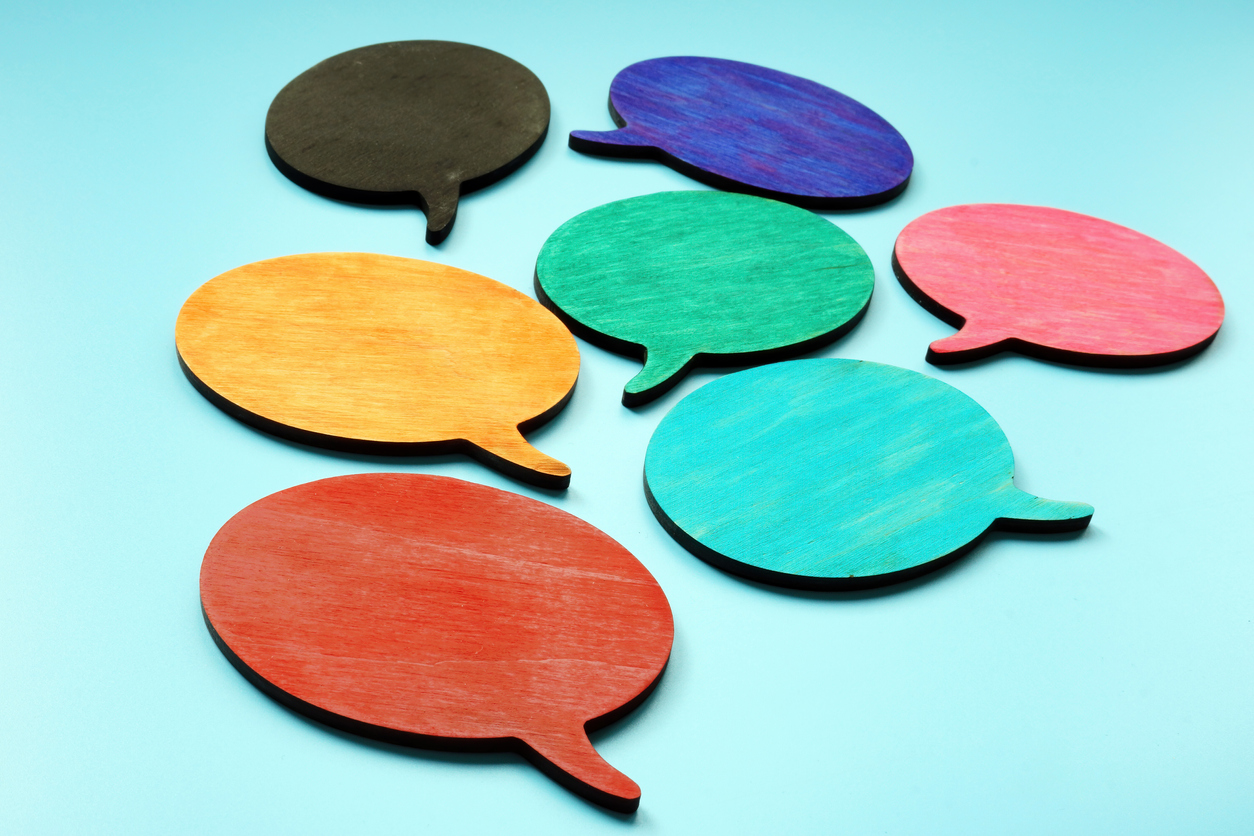Very few of us go into teaching because we want to repeat the same thing day in and
day out for years on end. Whether you’re an elementary school teacher or middle or high school teacher in any
subject, not many of us are satisfied with pedagogy that ignores the most wonderful
part of school: the students!
Yet – and this is a big yet – inviting students into the conversation isn’t easy. They’re young, changeable, excitable,
and often some combination of confused and irritated. Giving students voice and agency
in the classroom isn’t a matter of handing over the keys – it’s a measured, specific
practice that takes a lot of prep work and a lot of practice to get right.
The best teachers develop the skills to share class with their students. And discussion is a big part of that. Student voice isn’t just about kids raising their hands – it’s about trust, structure, learning,
and facilitation. We all remember “that” teacher who helped us find our voice, shaky
as it may have been, and today we’ll discuss how to be that person for your students
by facilitating challenging discussions in the classroom.
What is a ‘Challenging Discussion?’
A challenging discussion isn’t chit-chat about the weekend or idle review of pre-prepared
homework questions. Rather, it’s a discussion about culturally relevant issues that
invite disparate views. The type of topics where, as a teacher, you can ‘set the table’
for students to grapple with serious topics, create meaning together through agreement
and disagreement, and grow their communication skills and sense of self in the process.
In this cultural climate, though, every teacher knows that this already challenging
task feels inflamed these days. That reality isn’t lost on me, at all. In fact, I’ve ended up in my boss’
office after simply trying to start a nuanced conversation, an angry parent on the line. So how does a teacher
facilitate important, relevant discussions that help their students grow, without
losing their head?
Here’s a gathered set of best practices to help you get started!
Preparing for the Discussion
Consider the issue
Whether you teach elementary school or a particular subject in secondary school, every
course has key objectives. When deciding which “hot-button” topic to discuss, consider
those objectives, what prior knowledge students have, and any relevant content (like
a book they’re reading, time period they’re studying, or concept they’ve learned)
in your course. For instance, if your science course includes a section on evolution,
there’s certainly a rich discussion to be had about whether or not religion should
play a role in school. If your English Lit course includes a work by Toni Morrison,
there’s a discussion to be had about race or class in America. (See what I meant about
challenging topics?) In considering which relevant issue to bring up for discussion, you’re asking
yourself which issue will best serve the learning objectives of your course for your
students.
Be transparent early on
As a matter of inviting parents into your teaching as partners – and protecting yourself
– it can be useful practice to let parents know your approach to class discussions
early and often1. If you’re a new teacher, this may happen during the year when you develop the learning
segment, maybe informally in a communication or during parent-teacher conferences.
If you’re more seasoned, you can look ahead and prepare to share this approach during
open school night at the start of the year. Early and often!
Set structure and ground rules
Regardless of the age group you teach, reviewing the objectives and structure of the
discussion allows students to prepare themselves mentally for the “big day.” Conveying
objectives helps students understand the why of the practice, and these can and should be both content-related and skill-focused.
The structure is a play-by-play of how things will run. Depending on where you teach,
this could be as simple as starting with: put the desks in a square! And can continue
on from there.
More thoughtful, perhaps anxious students will play this structure through in their
minds, getting themselves ready to participate. More distractible or gregarious students
will respect that you laid out the flow for them, and will be less likely to butt
up against it.
Setting and reviewing ground rules before discussion day, similarly, allows each student to prepare themselves in their own
way. Only you know your students and how much management they’ll need in preparation
for the discussion, but in general, more is more here: overstating guidelines and rules related to accountable talk5 will help everyone participate effectively and respectfully.
Give time for preparation and practice
Discussions can become painfully quiet when students don’t know what to say. As teachers, who generally are people who like to talk a lot, it can be easy to forget how hard it can be for students to share in discussion. But truly, responding in-the-moment to someone else’s thought or opinion or a new concept we’re hearing about is hard for many people – young and old!
For students, discussion poses two challenges:
1) What they’re going to say, and
2) How they’re going to say it.
For the educational purposes of having a discussion, what students plan to say should
be largely prepared before the discussion begins. That way, students can focus on
growing their communication skills: looking intently at the speaker, showing active
listening, responding appropriately and insightfully and – if they’re well-prepared
and know their basic thoughts on the issue – developing spontaneous responses in the
moment.
The level to which students prepare and the amount of material they physically bring
to the discussion is a matter of grade-level and ability, and only you know what’s
right for your particular students. But prep is vital to a healthy discussion. Otherwise…crickets. This prep work gives students a chance to “find answers to their questions, conduct
research, talk to people, and learn more...” about the topic before coming to the
table for the discussion1.
How personal should you get?
A major step in running a discussion about a serious issue is to prepare yourself, as well. And there are two main components to that prep:
-
Decide what you’re willing to share with students about your personal views.
-
Decide on the type of behavior management you’ll employ in the case of inappropriate language or comments.
Research into whether or not it’s best to share your personal views revealed fairly consistent advice:
-
- “Though many teachers keep their own points of view out of the classroom entirely, if it is appropriate to share yours, wait until the end of the discussion.”1
- “When responding to student contributions, model open-mindedness and ask questions that prompt critical thinking.”2
- “Be aware of the implications of sharing your own views” and “weigh the impact.”3
- “Here is where it can get tough for a teacher: DON’T TALK!”6
Each of these pieces of advice share a common sentiment: it’s best not to share your personal opinion. Your words are likely to put a pin in the discussion,
with students feeling either morally correct or sidelined, depending on whether they
agree with you or not. Staying tight-lipped also protects you from criticism – the practice of facilitating challenging discussions isn’t about having your views
heard, but teaching students how to respectfully engage in conversation about controversial
issues.

Facilitating the Discussion
During the actual discussion, if you’ve prepped well, everything will unfold as it should. Of course, there are a few particular focuses to have on the big day…
Don’t talk!
The last bullet point above comes straight from a teacher’s mouth who’s actively in the classroom. He suggests speaking as little as possible for the sake of student learning. When you speak, students look at and listen to you, and they’re impetus to hop into the discussion shrinks with each word. So: don’t talk! Instead: monitor, circulate, note-take, data collect, and speak only when necessary to move the process along.
Have a go-to first move
One of the best pieces of advice about behavior management that I’ve ever heard is
to develop a go-to initial reaction for yourself – one that gets students’ attention
and gives you a moment to get logical about your response. When facilitating challenging
discussions, a student could slip up, whether purposely or accidentally, and use inappropriate
or offensive language. In this case, what will you do to put a quick stop to it without
ending the entire discussion? What works for you?
It could be a hand on your chest and a deep breath, perhaps. Only you can know what
will work, but the important thing is that you get students’ attention and take a
moment to address the issue without publicly shaming anyone. Here, consider the difference
between calling out and calling in7.
Be candid
Brevity of language is so important during these discussions because, as the teacher,
you are generally the ‘source of truth’ in the room. So, where is your language best
used during a discussion? One place is addressing any inappropriate language, as mentioned
above. But another place is lightening the mood!
Students get nervous and sometimes conversation can get sticky, tense, or come to
a silent (awkward) pause. That’s okay! You can “talk candidly about the challenges”3 in the moment with students: speak to tension candidly, praise respectful disagreement,
and reset the discussion to the next question or even to a brief written exercise
for students to reflect and reset.
If it makes you feel more comfortable, you can always have a back-up activity that
allows you to pause the discussion for the day and pick it up another day, if things
can get particularly heated!
Follow Up
Either at the end of class or at the beginning of the next one, you can synthesize
the varying views on the topic, call out the group’s triumphs, and ask them to reflect
on areas for growth – for the next discussion!
When taking on this important and nuanced task, it’s important to remember that you
yourself are always growing, and your ability to scaffold this experience for students
and help them grow will get stronger with each passing discussion you facilitate.
In fact, in a study out of Tufts University, it was found that on college campuses
where “classroom discussions about current events…cultural and ideological diversity,
and controversial political issues” take place often, “faculty…actively sought training
to develop their discussion teaching skills.”4
In essence, this stuff isn’t easy! Professors at the highest level seek training to
grow their professional skills in facilitating challenging discussions in the classroom
– and with that training, help young people find their voice, just like you do.
References
1 Spiegler, J., & Blow, C. (2012, March 23). Guest Post | 10 Ways to Talk to Students About Sensitive Issues in the News. The Learning Network.
2Facilitating Challenging Conversations in the Classroom - Center for Teaching and Learning. (n.d.). Center for Teaching and Learning.
3Managing Difficult Classroom Discussions: Diversity and Inclusion: Teaching Resources: Center for Innovative Teaching and
Learning: Indiana University Bloomington. (n.d.). Center for Innovative Teaching and Learning.
4 Thomas, N., & Brower, M. (n.d.). The Politically Engaged Classroom. In Teaching Civic Engagement Across the Disciplines (pp. 21-33).
5Accountable talk. (2020, March 18). Department of Education and Training Victoria.
6 Ferlazzo, L., Riccards, P., & Whitby, T. (2017, November 4).Response: Effective Classroom Discussions Don't Happen 'Magically' (Opinion). Education Week.
7 Interrupting Bias: Calling Out vs. Calling In Calling Out. Seed the Way.

